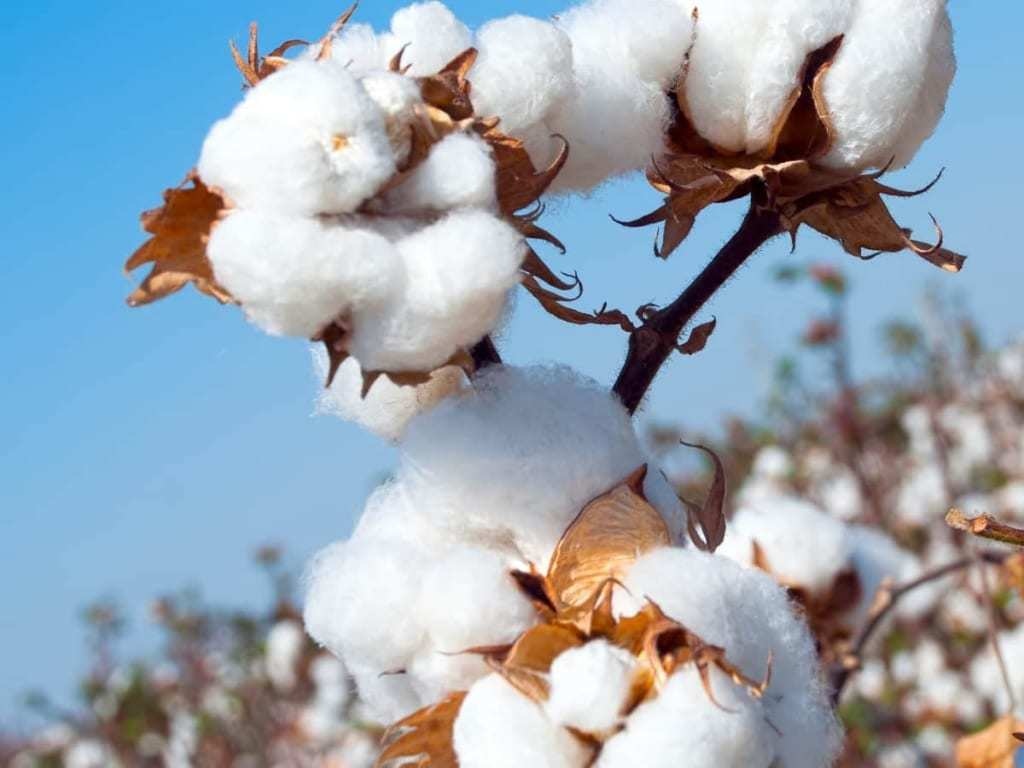Small business on cotton market
KARACHI: The local cotton market on Wednesday remained stable and volume remained low.
Cotton Analyst Naseem Usman told that the rate of cotton in Sindh is in between Rs 12800 to Rs 12900 per maund. The rate of cotton in Punjab is in between Rs 13500 to Rs 13600 per maund.
The rate of new crop of Phutti in Sindh was in between Rs 5700 to Rs 5900 per 40 kg. The rate of Phutti in Punjab is in between Rs 5800 to Rs 6400 per 40 kg. The rate of Banola in Sindh is in between Rs 1800 to Rs 1900 per maund. The rate of Banola in Punjab is in between Rs 2000 to Rs 2100 per maund.
The Economic Coordination Committee of the federal cabinet in its meeting on Monday reportedly considered fixing an intervention price for cotton to improve falling area under its cultivation. This decision follows other recent developments, beginning with a statement by the new finance minister that ‘price control regime on agricultural commodities needs to be reinstated to improve agricultural output’.
That Pakistan’s cotton output has fallen precipitously off a cliff needs no demonstration. According to official statistics, between FY16 and FY21, output fell by exactly half, barely retaining country’s slot among top five global producers. Although area under cultivation also fell by a quarter during this six-year period, it is a common mistake to blame the falling output on acreage.
Across the globe, leading cotton producing regions have increased cotton output not on the back of cultivated area, but by improving crop productivity, measured in yields per hectare. Over the last three decades, global cotton output has increased by over 50 percent as yields have made dramatic gains–increasing by over 5 times for Brazil, and by twice in China. In fact, productivity improvements have freed up land for plantation of other important competing crops, leading to hard won surpluses in global grain production.
Cotton Analyst Naseem Usman told Business Recorder that the country’s booming textile exports have given Pakistan government a reason to celebrate amid the COVID-19 gloom. As per a Daily Times report, Pakistan’s garment and apparel exports grew 9.06 per cent to $11.35 billion in Q1FY21 from 10.41 billion in the corresponding period last year. The country’s low export base helped boost yearly exports even though exports on a month-on-month basis declined by 1.3 per cent, reveal the Pakistan Bureau of Statistics.
During the financial year up to April’12, Pakistan’s textile exports grew to $1.337 billion. Exports by both value added textiles and basic textiles group grew in triple digits during the month. During the first 10 months, Pakistan’s textile exports grew 17 per cent to reach $12.7 billion. Exports of basic textiles such as cotton yarn and fabric also grew along with value added textiles. Growth in value-added category was dominated by knitwear, bed wear and home textiles.
The third COVID-19 wave has destroyed many major economies of the world. China and India are seeing a major drop in textile exports. In such times, Pakistan’s booming exports are proving to be a major boost to global textile market. However, Pakistan is currently facing an acute shortage of cotton supply, compelling ECC to allow duty-free cotton imports till June 30, 2021. Cotton scarcity of is likely to hike interest rates in the country besides restricting supplies. To overcome these, Pakistan needs to announce a new textile strategy soon.
ICE cotton futures stabilised on Tuesday near the highest in more than two weeks hit during the previous session, as market participants awaited quarterly crop data from the US Department of Agriculture that was expected to show a drop in plantings of the natural fibre. Cotton contracts for December rose 0.02 cent, or 0.02 %, at 87.45 cents per lb, at 11:56 a.m. EDT (1556 GMT), after hitting their highest since June 11 in the previous session.
“There’s the perception that acres are going to be lower in the report tomorrow,” and an uptick in the Chicago grains market is also supporting prices, said Rogers Varner, president of Varner Brokerage in Cleveland. Analysts and traders in a Reuters poll estimate cotton plantings for 2021 at 11.856 million acres in US Department of Agriculture’s (USDA) June 30 acreage report, down from March’s 12 million acres.
A drop in acres used for cotton would indicate a tightening of supply for the natural fibre, and likely add momentum to prices.
“In the planting season, the grain prices were better, and cotton prices did not rally as much, so the US lost some acres as the spring wore on,” Varner added.
Chicago Board of Trade grain and soybean futures rose as traders adjusted positions ahead of the report on crop plantings and continued to worry about the risks for unfavourable weather. The dollar gained on Tuesday, making cotton expensive for buyers holding other currencies.
The US Department of Agriculture’s (USDA) weekly crop progress report on Monday showed 52% of the crop was in good to excellent condition, identical to a week ago. Total futures market volume fell by 4,444 to 10,510 lots. Data showed total open interest gained 2,444 to 213,527 contracts in the previous session.
The Spot Rate remained unchanged at Rs 12600 per maund. The rate of Polyester Fibre was increased by Rs 3 per kg and was available at Rs 210 per kg.
Copyright Business Recorder, 2021

























Comments
Comments are closed.